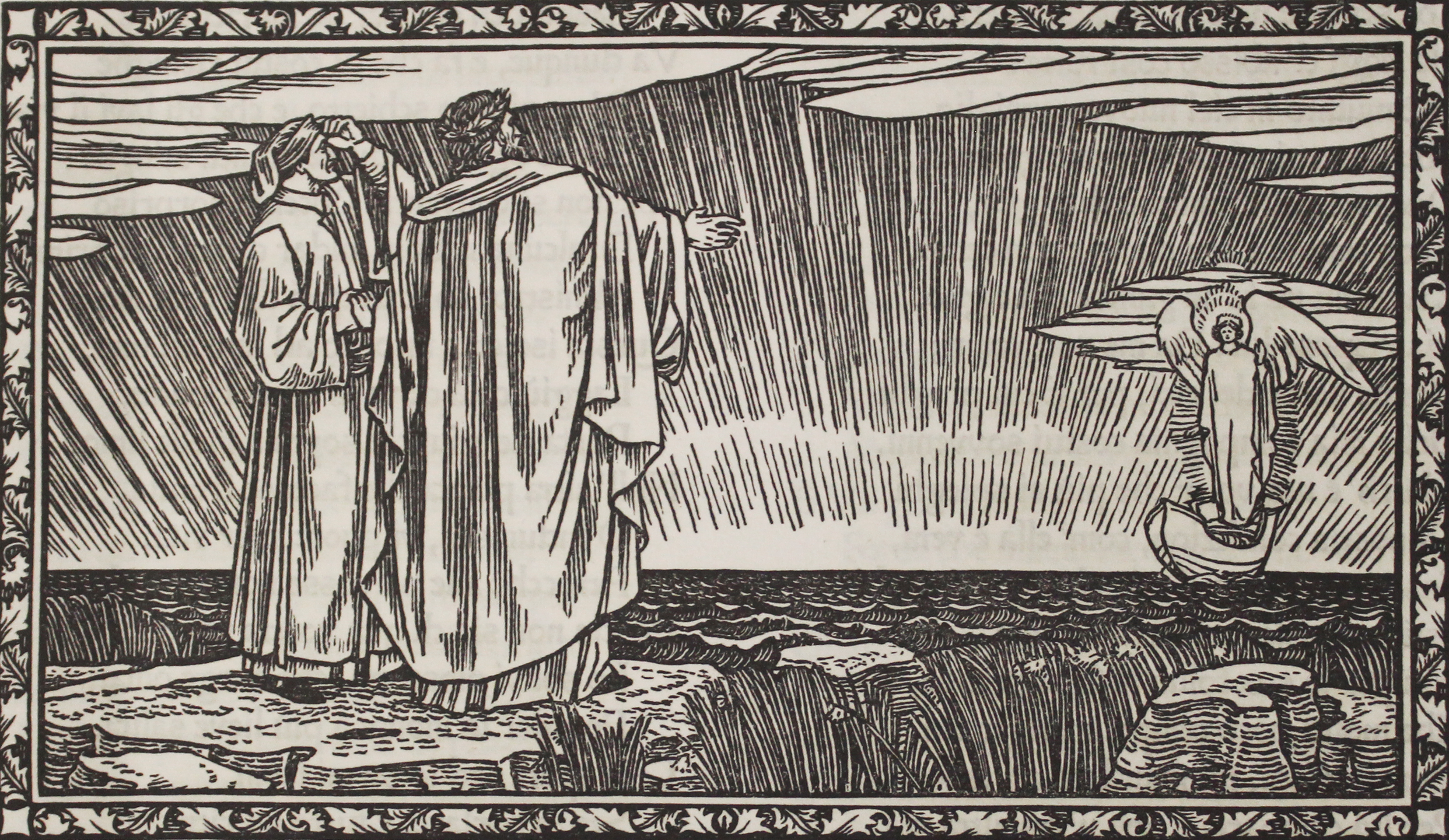Ashendene Dante

Ashendene Press (1895-1915, 1920-1935) was a small private printing press, now considered to have been a leader in the field of bookmaking. It was established by C.H. St. John Hornby, who was also a partner in the larger W.H. Smith Press. During its run, the Ashendene Press issued forty titles, most of which were gifted to friends and family or sold through a subscription service.
In a speech delivered to the Double Crown Club in 1931, Hornby said of the Dante: "In this latter year [1906] I started upon what was for me 'opus magnum' and was in fact a considerable work for a single hand press and one pressman… It was Tutte le Opere di Dante…. Looking back at it now, after twenty years, I still feel that it is a good bit of work and not unworthy of the 'Altissimo poeta'".
Printed over three years as a folio and limited to only one hundred and eleven copies, what is now more commonly referred to as simply the 'Ashendene Dante’ reproduces the complete works of the poet, and is regarded as the rarest of the major publications produced by the English private press movement. The six woodblocks for this edition were cut by William Hooper and Charles M. Gere, which were based on a 1497 edition of the Divine Comedy. These were heavily influenced by earlier Victorian interpretations of medieval woodcuts.
The 1909 Ashendene Dante was preceded by a set of three translations of the Inferno (1902), Purgatorio (1904) and Paradiso (1905) – smaller, and bound in vellum, and more in keeping with the aesthetics of medieval manuscripts and early printed books. These choices seem to have been influenced by William Morris and the Arts and Crafts movement, with whom the English private presses were often associated with. In championing artisanship over mass-production, imprints like this were part and parcel of the Arts and Crafts movement's romanticised step back from the perceived evils of industrialisation. To emphasise this the illustrations in these editions, by Charles Keates and William Hooper from drawings by Robert Catterson Smith, were painstakingly copied from a 1491 version of the Comedy, as evidenced by the D and V over the heads of Dante and Virgil: explicitly identifying major characters in this way was a common practice in early publications.
-

Charles Keates and William Hooper, after Robert Catterson Smith, Inferno III, woodcut illustration [in] Lo Inferno di Dante Alighieri Fiorentino, 1902, Chelsea: London, Ashendene Press. Donated by Tony and Margaret Pagone and family. Rare Books, Archives and Special Collections -

Charles Keates and William Hooper, after Robert Catterson Smith, Inferno VIII, woodcut illustration [in] Lo Inferno di Dante Alighieri Fiorentino, 1902, Chelsea: London, Ashendene Press. Donated by Tony and Margaret Pagone and family. Rare Books, Archives and Special Collections -

Charles Keates and William Hooper, after Robert Catterson Smith, Purgatorio XXII, woodcut illustration [in] Lo Inferno di Dante Alighieri Fiorentino, 1904, Chelsea: London, Ashendene Press. Donated by Tony and Margaret Pagone and family. Rare Books, Archives and Special Collections -

Charles Keates and William Hooper, after Robert Catterson Smith, Purgatorio XXXI, woodcut illustration [in] Lo Inferno di Dante Alighieri Fiorentino, 1904, Chelsea: London, Ashendene Press. Donated by Tony and Margaret Pagone and family. Rare Books, Archives and Special Collections -

Charles Keates and William Hooper, after Robert Catterson Smith, Paradiso VII, woodcut illustration [in] Lo Inferno di Dante Alighieri Fiorentino, 1905, Chelsea: London, Ashendene Press. Donated by Tony and Margaret Pagone and family. Rare Books, Archives and Special Collections -

Charles Keates and William Hooper, after Robert Catterson Smith, Paradiso XXXIII, woodcut illustration [in] Lo Inferno di Dante Alighieri Fiorentino, 1905, Chelsea: London, Ashendene Press. Donated by Tony and Margaret Pagone and family. Rare Books, Archives and Special Collections -

Charles Keates and William Hooper, after Robert Catterson Smith, Paradiso XXV, woodcut illustration [in] Lo Inferno di Dante Alighieri Fiorentino, 1905, Chelsea: London, Ashendene Press. Donated by Tony and Margaret Pagone and family. Rare Books, Archives and Special Collections -

William Hooper and Charles M Gere, Paradiso, woodcut illustration [in] Tutte le opere di Dante Alighieri Fiorentino, 1909, Chelsea: London, Ashendene Press. Donated by Tony and Margaret Pagone and family. Rare Books, Archives and Special Collections